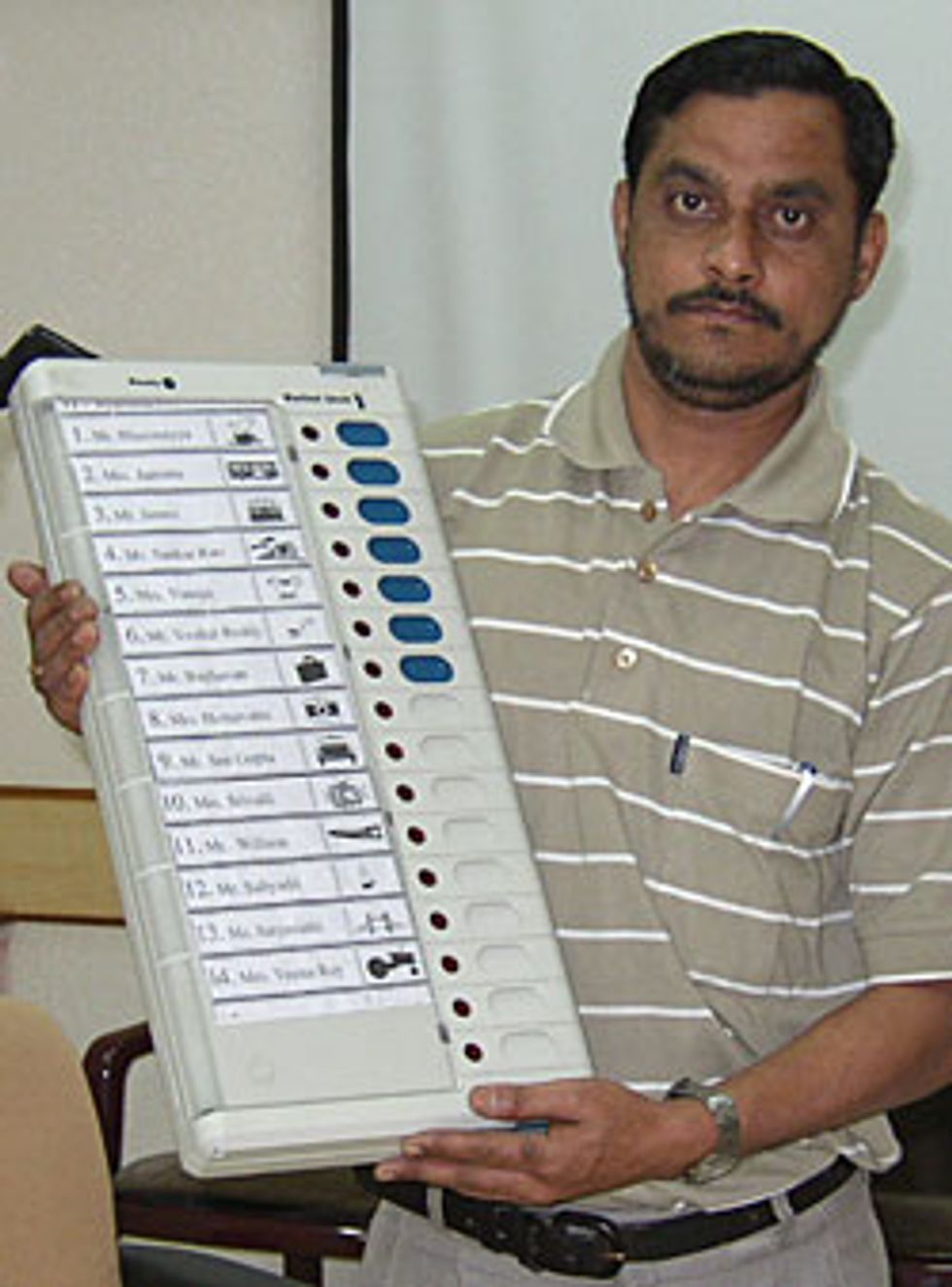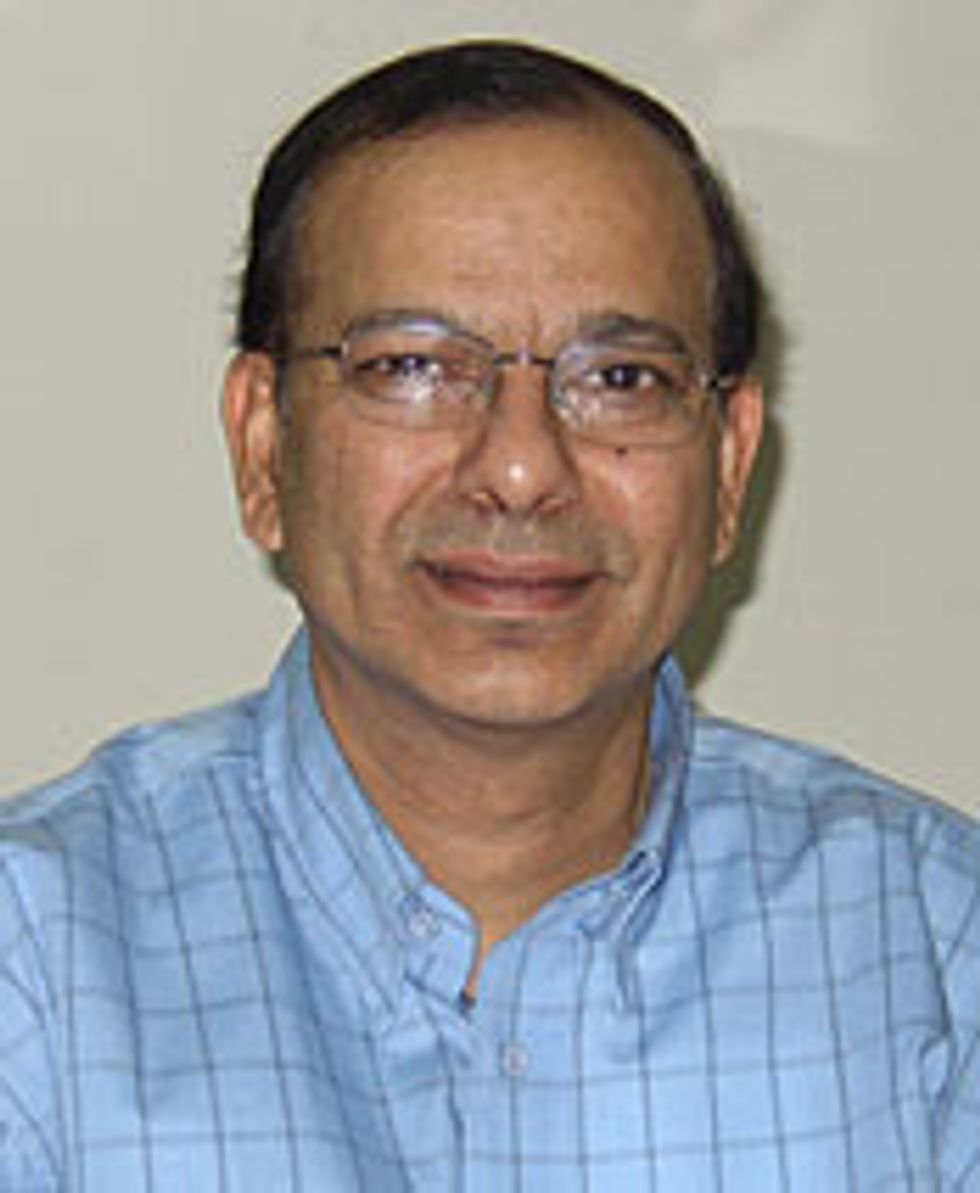10 May 2004--In the world's largest democracy new electronic voting machines (EVMs) have traveled in jeeps, in helicopters, and even on the backs of camels and elephants. More than a million have been mobilized for an estimated 670 million eligible voters who will choose a new national parliament in a staggered election, spread over three weeks, which ended today. On 13 May the machines will perform what previous generations might have thought impossible. They will produce the results of the largest democratic election in the world within a few hours.
"By and large, the machines have been very well received," says Ajay N. Jha, deputy election commissioner at the Election Commission of India. The federal agency has used EVMs in several state elections over the last five years. But demand for machines rose sharply this year when India's coalition government called the national election six months early to capitalize on political gains in some states and on a resurgent economy.
Pick One
An election official shows off one of the voting machines used in India's all-electronic elections.
EVMs began to be widely used only in the late 1990s. India follows the lead of Brazil, which held an all-electronic election in October 2002. Those machines had touch screens featuring pictures of candidates. India's simpler machines are made by two government firms—Electronics Corporation of India Limited (ECIL), in Hyderabad, and Bharat Electronics Limited (BEL), in Bangalore. Each machine has a control unit about the size of the handheld devices used by many courier companies to record deliveries, and the actual voting unit, which is a little longer and resembles a synthesizer keyboard. They were designed to be assembled within minutes and operated by schoolteachers, clerks, and other other civil servants in charge of polling booths.
To vote, a person must first present sufficient identification. The voter then signs an official record book and is assigned a serial number. The electoral officer presses the Ballot button on the control unit to release one vote. This battery-powered unit is connected to the voting unit by a five-meter cable. A green Ready lamp lights up on the voting unit, which is in a screened-off area. The voter has to press the button next to the name and party symbol of the desired candidate. A red lamp glows briefly once the button is pressed and the machine emits a beep, indicating that a vote has been cast.
"It is easy to operate, even by the illiterate," a BEL official said shortly before the national election got under way last month. He said that EVMs were used in five state assembly elections last year, and voters in rural areas were fascinated by the technology. "You won't believe the kind of response. Some of them were thrilled to punch the machines."
A single machine can record about six votes per minute, but the Election Commission's Jha says the actual rate during nonstop voting is about half this figure. While each unit can hold well more than 3000 votes, election officials have deployed enough machines to restrict the maximum number of voters per machine to about 1100. This is meant to ease crowds and to make voting even less cumbersome.
In Charge
Deputy election commissioner Ajay N. Jha says the machines have been "well received." There is no indication that EVMs helped to increase the number of voters, but researchers will try to answer that question through exit surveys a the polls.
The machines are tamperproof to prevent fraud, but not just because of the new technology. In a curious blend of the old and the new, the control and balloting units have small plastic hoops on them to allow a piece of string to pass through once voting is completed. Once the various strings are tied, they are secured with wax seals bearing the emblem of the Election Commission. (In a staggered election, results cannot be declared immediately, so the machines have to be placed in protective custody until it is time to declare results all at once). The Result button on the control unit is further protected by a paper seal bearing the signatures of all the candidates or their representatives. This small piece of paper is affixed on a plastic lid, which is shut so that no one can press the button until it is time to remove the seal. The sealing and unsealing of machines is done in front of representatives from each political party.
The software used to run the machine is burned into the microprocessor, so there is no room for manipulation once it is made and installed. Employees of the companies that manufacture the units are screened following procedures used for all government-run firms. Election Commission officials have inspected the entire production process and are satisfied. At any rate, since the names of candidates and parties on the ballot cards placed over the selection buttons are different in each constituency, tinkering with the machine's software during assembly could not throw an election in any party's favor.
One concern with electronic systems is their ability to perform a recount. To accommodate this, Indian officials have required the machines be able to produce a hard copy of the votes once voting has ended. If empowered by a court, election officials can use the serial numbers to identify each voter and to find out who he or she has chosen. Deputy Election Commissioner Jha is quick to point out, though, that although technically possible, actual breaches of voter privacy are extremely rare. During normal counting, officials look at only the total number of votes polled and the number cast in favor of each candidate.
Problems such as intimidation of voters and election staff persist despite the fact that voting has been staggered to allow authorities to beef up security in sensitive areas, and the EVMs can't do anything about that. However, they have factored in to a few scattered incidents of intimidation of first-time EVM users. In one instance, voters were told that if they pressed any button other than that of a particular political party, they would get an electric shock! Observers here say voter ignorance will be less of a problem in future elections.
Considerably less sophisticated than their Western counterparts, the machines are priced at US $230 for the Election Commission, which holds the patent for their production. ECIL, one of the two manufacturers, says it has been approached by several countries to make similar machines designed to suit their specific election needs. Several of India's neighbors, including Nepal, Bangladesh, Sri Lanka and Bhutan, have sent representatives to observe the national election, particularly the use of EVMs.
"We are looking for markets," says ECIL spokesperson Venkata Raja Kumar. "We are hoping something will open up."




